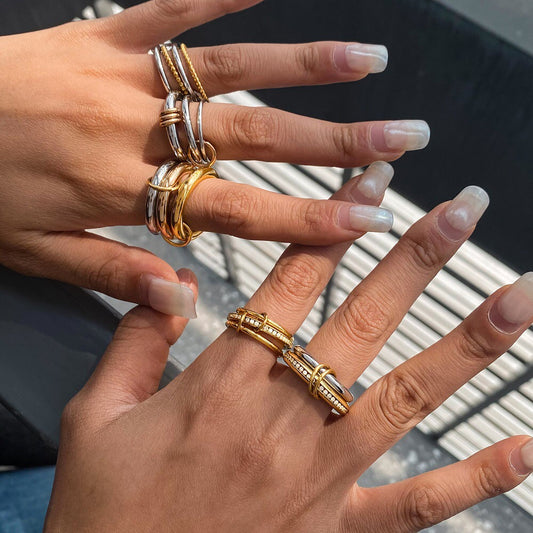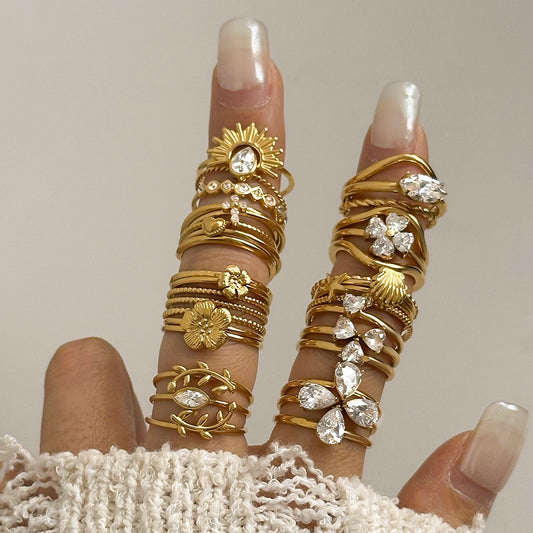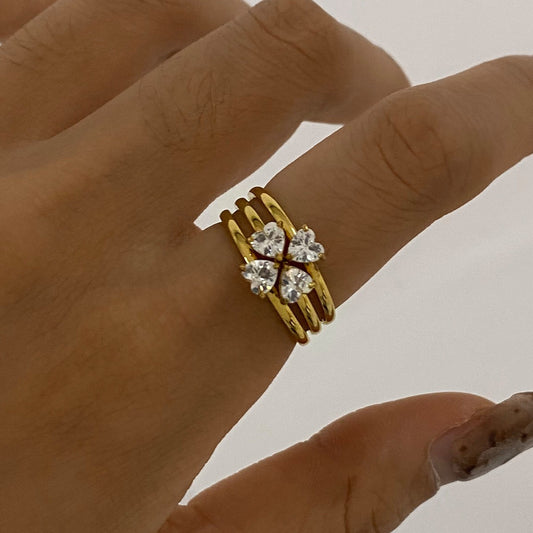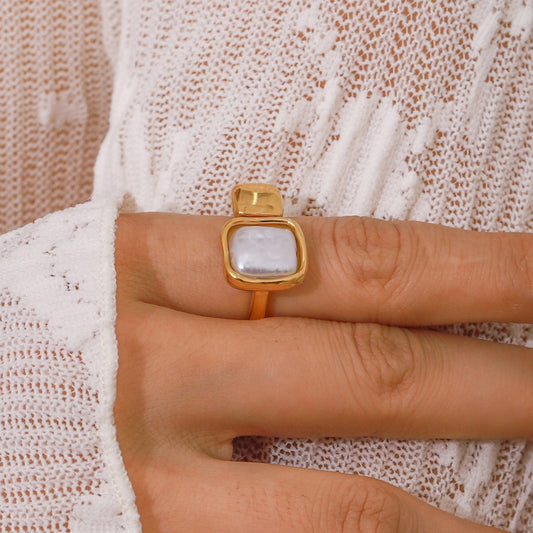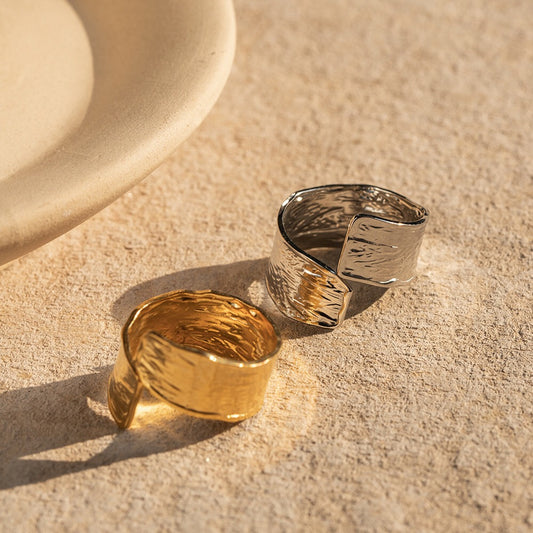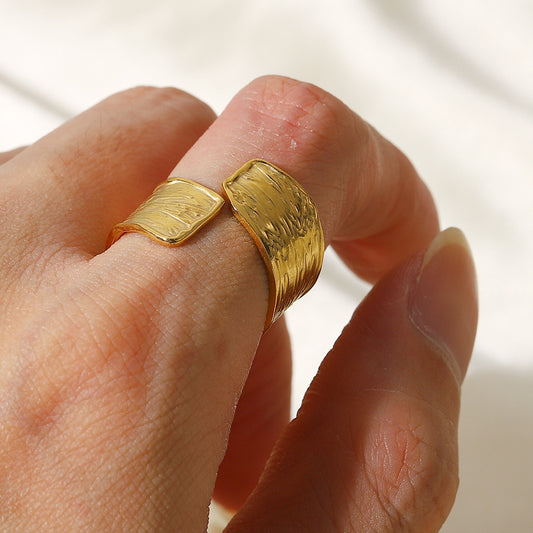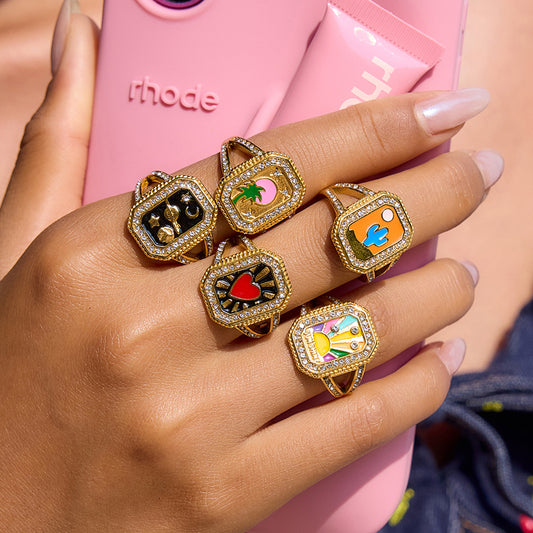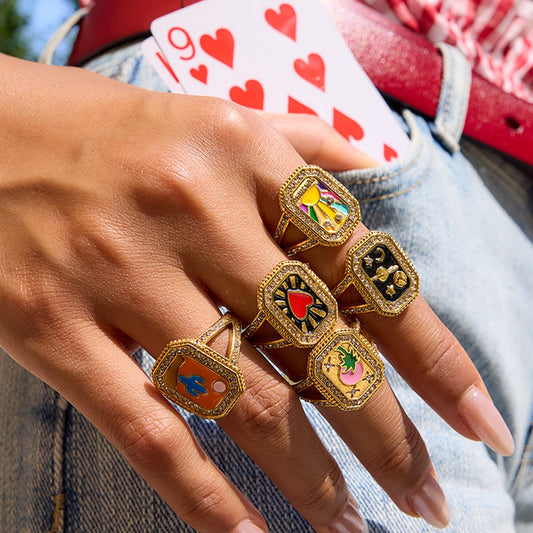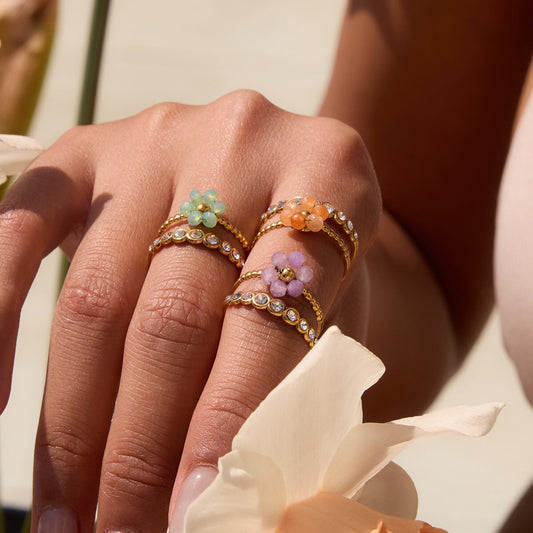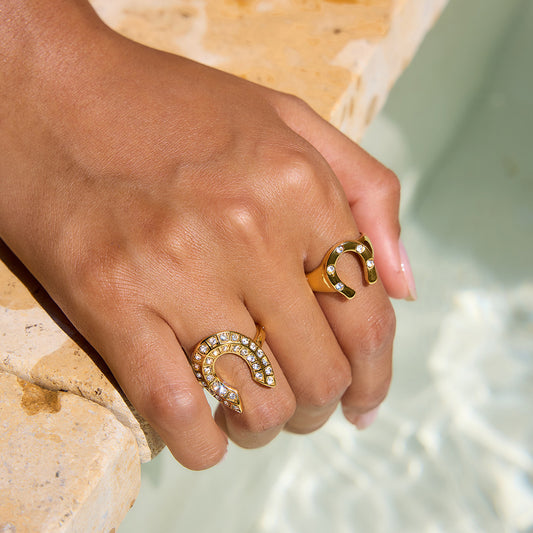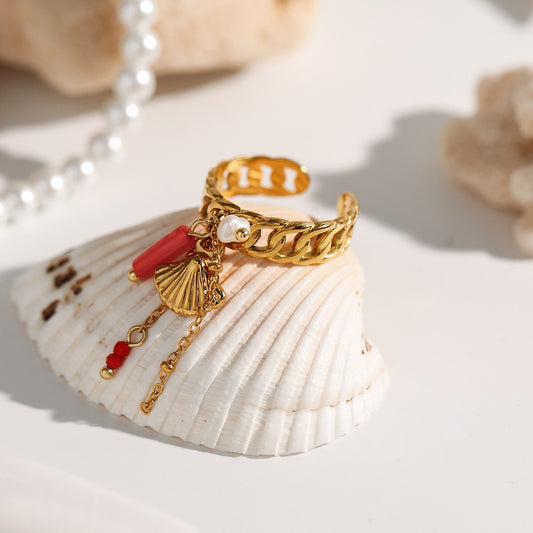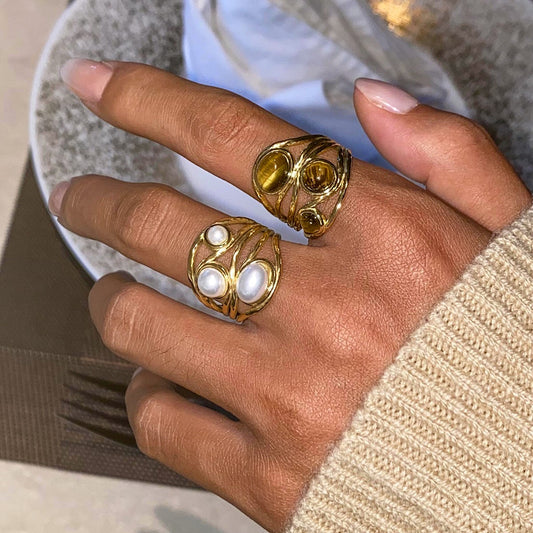White gold wedding bands is more than a ring—it’s a luminous symbol of enduring love, blending the warmth of gold with the sleek sophistication of silver. Market Size and Growth: Global Bridal Jewelry Market size was valued at USD 53.79 billion in 2024, expected to reach USD 87.62 billon by 2034, with a CAGR of 5% from 2025 to 2034. Unlike yellow gold (which leans classic) or platinum (which comes with a higher price tag), white gold offers accessible luxury—perfect for everyday wear, whether you’re typing at a desk, cooking together, or exploring new places. Whether you prefer a minimalist plain band, a sparkling pavé design, or a textured style that tells your story, a white gold wedding band is a timeless choice that will shine as bright as your commitment.

What Is a White Gold Wedding Band?
White gold wedding bands are crafted from white gold—a metal alloy made by mixing pure gold with white metals like nickel, palladium, or silver. To achieve its signature bright, silvery finish, white gold is then plated with rhodium (a rare, durable metal from the platinum family). This combination gives white gold its unique appeal: the strength of an alloy (harder than pure gold) and the cool, polished look that pairs seamlessly with diamonds and other gemstones.
Key Traits of White Gold Wedding Bands
-
Durability: Pure gold is soft and prone to scratching, but the metals added to make white gold (like palladium or nickel) boost its hardness. This makes white gold wedding bands ideal for daily wear—they resist dings and maintain their shape, even after years of use.
-
Versatility: White gold’s neutral tone complements every skin tone (warm, cool, or neutral) and pairs with any engagement ring style. A white gold band looks just as elegant with a solitaire diamond ring as it does with a colored gemstone or vintage-inspired design.
-
Affordability: Compared to platinum (a pure white metal), white gold is significantly more budget-friendly—often 30–50% less expensive—while offering a similar sleek aesthetic. This makes it accessible for couples working within a range of wedding budgets.
-
Timelessness: White gold has been a wedding staple since the mid-20th century, and it never feels dated. Unlike trendy metals that fade from fashion, a white gold wedding band will still look stylish on your 50th anniversary.
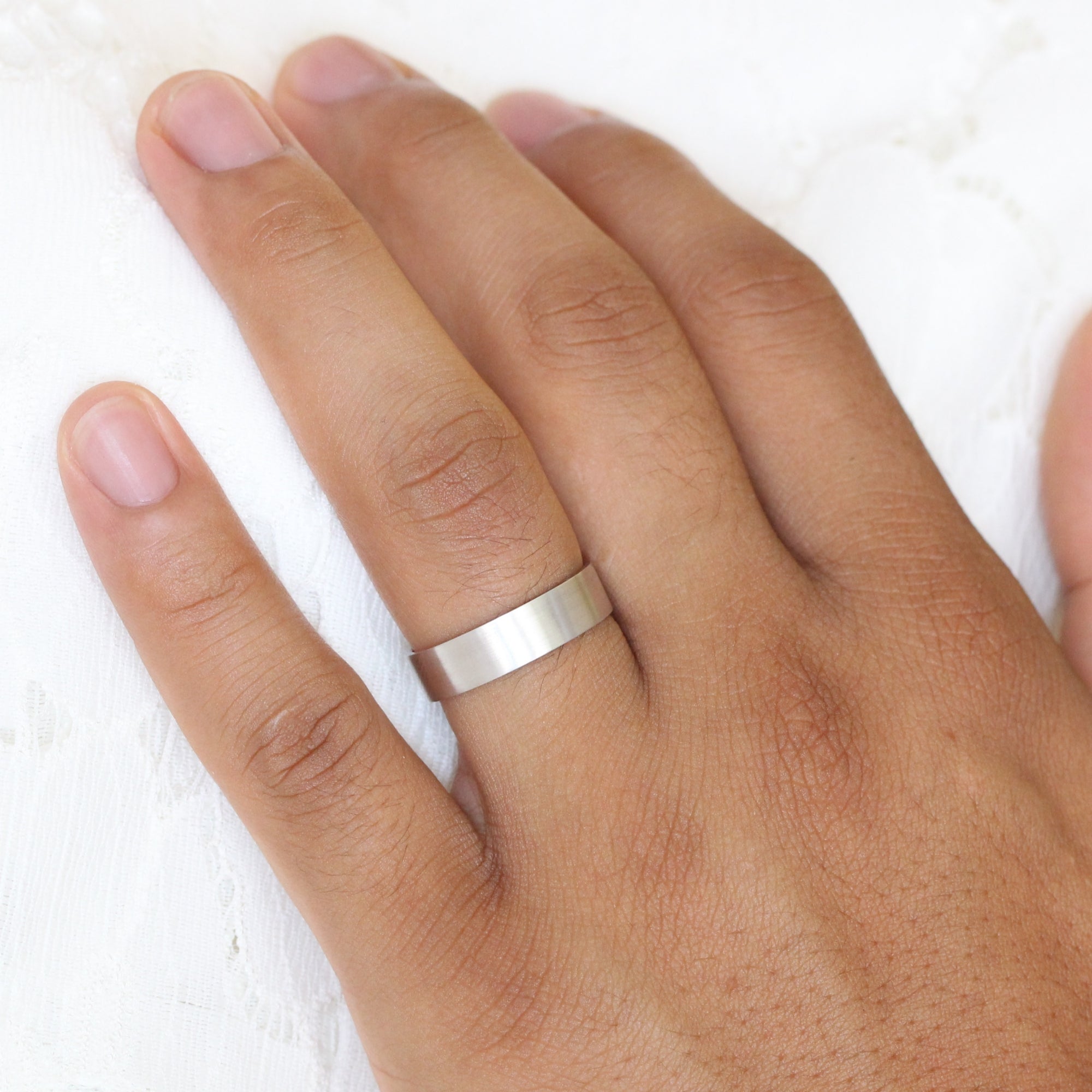
Why Choose a White Gold Wedding Band?
Couples gravitate to white gold wedding bands for three unshakable reasons: their ability to fit every style, their practicality for daily life, and their symbolic tie to lasting love.
It Complements Every Style (And Engagement Ring)
One of white gold’s biggest strengths is its versatility—it works with any aesthetic, from minimalist to maximalist:
-
Minimalists: A plain white gold band (2–3mm wide) is understated yet sophisticated, letting your love take center stage without distraction.
-
Sparkle Lovers: A white gold band with pavé diamonds (tiny diamonds set into the metal) adds subtle glamour, pairing beautifully with a diamond engagement ring for a cohesive, luminous look.
-
Vintage Enthusiasts: White gold bands with milgrain edges (tiny beaded detailing) or filigree work evoke old-world charm, complementing vintage engagement rings perfectly.
-
Modern Couples: Textured white gold bands (hammered, brushed, or twisted) add contemporary edge, ideal for those who want a ring that feels unique but still timeless.
It also complements every engagement ring metal: whether your engagement ring is white gold, platinum, or even yellow gold (the contrast creates a trendy mixed-metal look), a white gold wedding band will blend seamlessly.

It’s Practical for Daily Wear
Wedding bands are meant to be worn every day, and white gold rises to the occasion:
-
Scratch Resistance: White gold’s alloy composition makes it harder than pure gold, so it won’t show scratches as easily as yellow gold. This is a game-changer for busy couples—no need to remove your ring during chores or work (unless you’re handling heavy machinery or harsh chemicals).
-
Low Maintenance (With One Catch): Unlike silver, which tarnishes, white gold stays bright with minimal care. The only upkeep? Every 1–2 years, you’ll need to have it re-plated with rhodium (a quick, affordable process that costs $50–$100) to refresh its silvery finish. Without re-plating, white gold may develop a subtle warm hue over time—some couples love this "patina," but re-plating is easy if you prefer a crisp white look.
-
Comfort: White gold is lightweight compared to platinum, so it feels comfortable on your finger even after hours of wear. This is especially important for couples who aren’t used to wearing jewelry daily.
It Symbolizes Pure, Lasting Love
White has long been associated with purity, loyalty, and new beginnings—making white gold a fitting symbol for marriage. Its luminous finish evokes the brightness of your shared future, while its durability mirrors the strength of your commitment. Unlike trend-driven metals that may feel fleeting, white gold’s timelessness is a reminder that your love is built to last. Many couples also appreciate that white gold is a "blank canvas": you can engrave it with your wedding date, a meaningful quote, or your initials to make it even more personal.
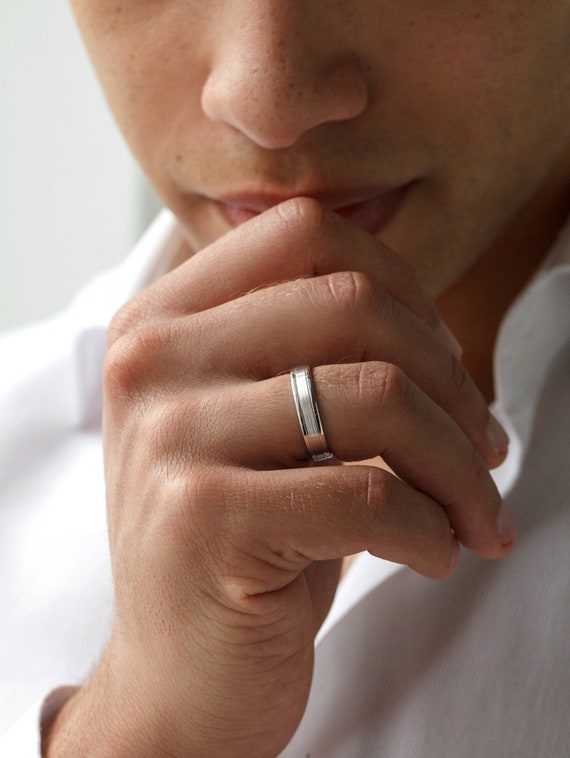
Popular Styles of White Gold Wedding Bands
White gold wedding bands come in endless designs, each tailored to different tastes and lifestyles. Here are the most beloved styles to consider:
1. Plain White Gold Wedding Band (Minimalist Classic)
The most timeless style—simple, sleek, and perfect for anyone who loves "less is more":
-
Design: A smooth, unadorned band (2–4mm wide) in 14k or 18k white gold. It may have a slight dome (comfort fit) for easier sliding over knuckles or a flat edge for a modern look.
-
Best For: Minimalists, busy professionals, or couples who want their band to complement (not compete with) their engagement ring. It’s also a great choice for matching his-and-hers bands—plain white gold looks sharp on all genders.
-
Why It’s Loved: It’s the ultimate "wardrobe workhorse"—it pairs with every outfit, from jeans and a t-shirt to a wedding gown or formal suit. A plain white gold band also ages beautifully; even with minor scratches, it retains its elegant appeal.
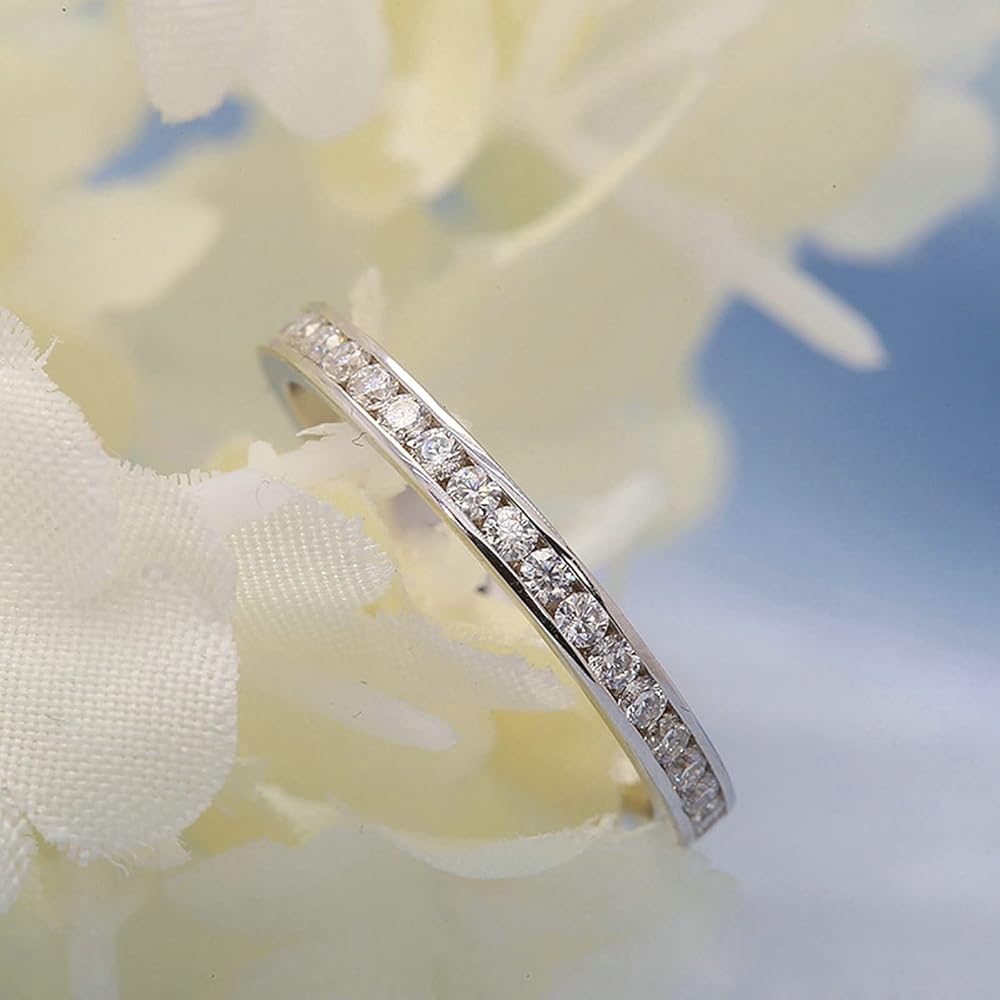
2. Pavé White Gold Wedding Band (Sparkling Elegance)
For couples who want a touch of glamour without going over the top:
-
Design: A white gold band (2–3mm wide) with tiny pavé diamonds (0.01–0.03ct each) set into the top half or entire circumference of the band. The diamonds are held in place by small metal prongs or a channel, creating a continuous line of sparkle.
-
Best For: Brides or grooms who love subtle shimmer, or couples who want their wedding bands to match a diamond engagement ring. It’s also a popular choice for anniversary upgrades (e.g., adding a pavé band to a plain white gold ring after 5 years).
-
Why It’s Loved: The diamonds catch light with every movement, making the band feel special without being flashy. White gold’s bright finish enhances the diamonds’ sparkle, creating a cohesive, luminous look.
3. Textured White Gold Wedding Band (Modern Edge)
A trendy take on the classic band, perfect for couples who want to add personality:
-
Design: A white gold band (3–4mm wide) with a textured finish—options include hammered (dimpled, artisanal look), brushed (matte, soft sheen), twisted (intertwined metal, symbolizing two lives coming together), or grooved (subtle lines for visual interest).
-
Best For: Fashion-forward couples, those who want a band that stands out from plain designs, or anyone who loves a "handmade" aesthetic. Textured bands are also great for hiding minor scratches (a bonus for active lifestyles).
-
Why It’s Loved: Texture adds depth and character—no two hammered or brushed bands look exactly alike. A twisted white gold band also carries sweet symbolism: it represents the unbreakable bond between you and your partner.
4. Two-Tone White Gold Wedding Band (Mixed-Metal Charm)
For couples who can’t choose between white gold and another metal:
-
Design: A white gold band accented with yellow gold or rose gold—common styles include a white gold band with a thin yellow gold stripe down the center, or a band that alternates between white and rose gold links.
-
Best For: Couples who love mixed-metal jewelry (e.g., a white gold engagement ring with a yellow gold necklace) or want a band that feels unique. It’s also a meaningful choice if one partner prefers white gold and the other prefers yellow/rose gold—two tones, one ring.
-
Why It’s Loved: Two-tone bands add visual interest without being busy. White gold’s brightness balances the warmth of yellow or rose gold, creating a harmonious look that works for every occasion.
5. Comfort-Fit White Gold Wedding Band (Everyday Comfort)
Designed for all-day wear, this style prioritizes comfort without sacrificing style:
-
Design: A white gold band with a rounded inner edge (instead of a flat edge), which slides over knuckles easily and doesn’t dig into your finger. It’s available in plain, pavé, or textured designs, with widths ranging from 2–5mm.
-
Best For: Anyone who plans to wear their band 24/7 (e.g., nurses, teachers, or frequent travelers) or has larger knuckles. Comfort-fit bands are also popular for men’s wedding bands, as they feel substantial without being uncomfortable.
-
Why It’s Loved: The rounded edge eliminates the "pinching" feeling some bands cause, especially when your fingers swell (e.g., in hot weather or after exercise). It’s a small detail that makes a big difference for daily wear.
How to Choose the Perfect White Gold Wedding Band
Selecting a white gold wedding band is about balancing style, practicality, and budget. Follow these steps to find a band that fits your lifestyle and lasts a lifetime:
Step 1: Choose the Right Karat Weight
White gold is available in 10k, 14k, and 18k—each with different gold content and properties:
-
10k White Gold: Contains 41.7% pure gold, mixed with more alloy metals (nickel, palladium). It’s the hardest and most affordable option, but it may have a slight warm hue (less bright white) and is more likely to cause allergies if it contains nickel.
-
14k White Gold: Contains 58.3% pure gold—this is the most popular choice. It’s durable enough for daily wear, has a bright white finish (with rhodium plating), and is less likely to cause allergies (especially if alloyed with palladium instead of nickel).
-
18k White Gold: Contains 75% pure gold, mixed with less alloy. It’s softer than 10k or 14k, so it’s more prone to scratches, but it has a richer, more luminous white finish. It’s a great choice for those who want a luxury feel and don’t mind extra care.
Pro Tip: If you have sensitive skin, opt for 14k or 18k white gold alloyed with palladium (not nickel)—palladium is hypoallergenic and creates a brighter white tone.
Step 2: Pick a Width That Fits Your Hand
Band width affects both style and comfort—choose based on your hand size and personal preference:
-
Narrow Bands (2–3mm): Ideal for smaller hands or those who prefer a delicate look. They’re lightweight and pair beautifully with dainty engagement rings.
-
Medium Bands (3–4mm): The most versatile width—works for most hand sizes and styles (plain, pavé, textured). They feel substantial without being bulky.
-
Wide Bands (4–6mm+): Great for larger hands or those who want a bold look. They’re popular for men’s wedding bands or couples who prefer a more statement-making design.
Pro Tip: If you’re choosing a matching set, consider slightly different widths—many couples opt for a 2–3mm band for her and a 4–5mm band for him, keeping the metal and style consistent.
Step 3: Consider Your Lifestyle
Your daily activities should guide your choice of band style:
-
Active Lifestyles (Gym, Hiking, Cooking): Choose a plain or comfort-fit white gold band with a bezel setting (if you want diamonds)—avoid pavé or textured bands, which can catch on clothing or trap dirt.
-
Office Jobs: You can wear any style, but pavé or two-tone bands add a touch of sophistication without being distracting.
-
Frequent Travelers: Opt for a durable 14k white gold band—its hardness means it can withstand the wear and tear of luggage, airport security, and new environments.
Step 4: Set a Realistic Budget
White gold wedding bands range in price from $300 to $3,000+, depending on karat weight, width, and design:
-
Budget Under $500: 10k or 14k plain white gold band (2–3mm wide) or a simple textured band.
-
Budget $500–$1,500: 14k white gold band with pavé diamonds (0.10–0.30ct total weight) or a two-tone comfort-fit band.
-
Budget Over $1,500: 18k white gold band with larger pavé diamonds (0.50ct+ total weight), a custom design, or a band with rare gemstones (e.g., sapphires or emeralds) alongside diamonds.
Money-Saving Tip: Opt for a 14k white gold band instead of 18k—you’ll get durability and a bright finish at a lower price. You can also skip diamonds for now and add them later as an anniversary upgrade.
How to Care for Your White Gold Wedding Band
With proper care, your white gold wedding band will stay bright and beautiful for decades. Here’s what you need to do:
Daily Care Tips
-
Remove Before High-Risk Activities: Take off your band before swimming (chlorine can damage rhodium plating), showering (soap builds up and dulls the finish), working out (sweat can cause discoloration), or using cleaning products (bleach and ammonia scratch metal and damage diamonds).
-
Wipe After Wear: Gently wipe your band with a soft microfiber cloth every night to remove skin oils, lotion, or dirt—this prevents buildup that can make the band look dull.
-
Avoid Harsh Chemicals: Keep your band away from perfume, hairspray, and nail polish remover—these can strip the rhodium plating and discolor the metal. Apply beauty products first, then put on your band.
Weekly Deep Cleaning
-
Mix warm water with a drop of mild dish soap (or a jewelry-specific cleaner) in a small bowl.
-
Soak your white gold band for 10–15 minutes—this loosens dirt and oil from the metal and diamond settings.
-
Gently scrub the band with a soft-bristled toothbrush (focus on pavé settings or textured areas where dirt hides). For plain bands, a quick wipe with the cloth is enough.
-
Rinse under warm running water and pat dry with a microfiber cloth—never air-dry, as water spots can form.
-
For extra shine: Polish the band with a rhodium-plated jewelry cloth (available at jewelry stores) to maintain its bright finish.
Annual Maintenance
-
Rhodium Re-Plating: Every 1–2 years, take your band to a jeweler for rhodium re-plating. This process restores the band’s bright white color and covers any scratches or wear. It’s quick (takes 1–2 days) and affordable ($50–$100).
-
Prong Check (For Pavé Bands): If your band has diamonds, ask the jeweler to check the prongs during re-plating. Loose prongs can cause diamonds to fall out, so tightening them regularly is essential.
-
Professional Cleaning: Most jewelers offer free professional cleanings for wedding bands—take advantage of this to keep your band looking its best.
Frequently Asked Questions About White Gold Wedding Bands
Q1: Will white gold wedding bands turn yellow over time?
A: White gold itself doesn’t turn yellow—what you’re seeing is the underlying gold alloy peeking through as the rhodium plating wears off. This is normal and easy to fix with re-plating. With regular re-plating (every 1–2 years), your band will stay bright white.
Q2: Is white gold hypoallergenic?
A: It depends on the alloy. White gold mixed with nickel can cause allergies (common in 10k white gold), but white gold mixed with palladium is hypoallergenic. If you have sensitive skin, ask your jeweler for "nickel-free white gold" (most reputable brands offer this).
Q3: Can white gold wedding bands be resized?
A: Yes—most white gold bands can be resized by 1–2 sizes. Plain bands are easiest to resize; pavé or textured bands may require more work (jewelers may need to remove and re-set diamonds). Always choose a jeweler with experience working with white gold to avoid damaging the rhodium plating.
Q4: How does white gold compare to platinum?
A: White gold is more affordable, lighter, and easier to maintain (with re-plating), while platinum is denser, more durable (no re-plating needed), and hypoallergenic. Both are great choices—white gold is ideal for budget-conscious couples, while platinum is better for those who want a lifelong investment without upkeep.
Q5: Can I wear my white gold wedding band with other jewelry?
A: Absolutely! White gold pairs beautifully with silver, platinum, and even yellow/rose gold. Try stacking your wedding band with a thin white gold engagement ring, or wear it alongside a silver bracelet for a modern mixed-metal look. Just avoid wearing it with harsh metals (like stainless steel) that can scratch the rhodium plating.
Conclusion: A Luminous Symbol of Forever
White gold wedding bands are more than a piece of jewelry—it’s a daily reminder of the love, loyalty, and shared future you’ve committed to. Its sleek, luminous finish mirrors the brightness of your partnership, while its durability stands as a testament to the strength of your bond. Unlike fleeting trends that fade, white gold endures—just like the vows you’ll exchange.
What makes white gold so special is its ability to adapt to your story. It can be a simple plain band for the couple who values quiet intimacy, a sparkling pavé design for those who love subtle glamour, or a textured two-tone style for partners who march to their own beat. It complements every engagement ring, every skin tone, and every phase of life—from your wedding day to anniversaries, career milestones, and quiet nights at home cooking together.
And while it requires a little care—an occasional wipe, a yearly rhodium re-plate—those small acts become part of your shared routine, a gentle way to nurture both your ring and your relationship. When you take your band to the jeweler for re-plating, it’s not just about refreshing its shine; it’s a moment to reflect on how far you’ve come, and to look forward to all the years ahead.
At its core, a white gold wedding band is a promise: to love each other through the ordinary and the extraordinary, to find beauty in the everyday, and to keep your bond as bright as the day you said “I do.” Whether you’re sliding it onto your partner’s finger during your ceremony, or glancing down at it while holding hands on a walk, it will always be a symbol of the love that brought you together—and the forever that lies ahead.
Here’s to the quiet, luminous moments—and the white gold band that will shine through them all.






